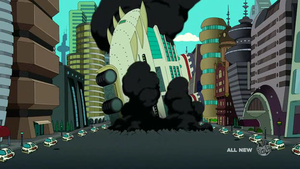I’m falling out of love with crowdfunding, and I’m not proud of it.
 Sites like IndieGoGo and Kickstarter have opened the gates to thousands of creators who never would have seen the light of a game store shelf if they’d had to rely on traditional publishing. This has led to a whole ton of gaming awesomeness, from Alien Frontiers to Viticulture to Tiny Epic Kingdoms.
Sites like IndieGoGo and Kickstarter have opened the gates to thousands of creators who never would have seen the light of a game store shelf if they’d had to rely on traditional publishing. This has led to a whole ton of gaming awesomeness, from Alien Frontiers to Viticulture to Tiny Epic Kingdoms.
Each of these games is breath of fresh minty air into the lungs of an increasingly-derivative industry, but for every crowdfunded diamond, you also get a whole lot of coal. As of the time this was written, 18 board game campaigns launched in the preceding few days on Kickstarter alone. Of those, only two are games I would consider backing. The rest are half-baked, poorly-implemented, or just straight up offensive.
The Burdens We Bear
The general public is now an industry gatekeeper, and with that comes the responsibility of sorting the gold from the silt. This has become, I think, a larger burden than we’d realized – and it’s growing heavier by the day.
As crowdfunding gains momentum, more creators are turning away from traditional publishing paths, and more and more and more games are appearing on Kickstarter and IndieGoGo. This is great because games are great…but, you know, not every game is great. And crowdfunding, for all the opportunities it offers, is encountering some very real problems.
The first issue is sheer volume. Sifting through a day’s worth of Kickstarter games is time-consuming and exhausting. Because of the work I do here at the CR, I look at every game on Kickstarter within about two days of its launch. This usually takes anywhere from forty-five minutes to two hours depending on the number of games and their quality. Even if you rely on word-of-mouth for your recommendations, you’re almost guaranteed to be given a handful of options each week.
Which brings us to the second issue: quality. While the industry is, overall, moving in a good direction, we still have bad games. We’ll always have bad games. And the more games you look at – particularly games that haven’t been vetted by anyone else – the more likely it is that you’ll find one of these not-so-wonderful products. Given the number of projects that launch on Kickstarter every week, it’s not surprising that a subset of them just aren’t ready for public scrutiny.
So here’s the dilemma: how can we encourage creators to pursue their goals while also weeding out the projects that just aren’t up to par?
Crowdfunding’s Reflection of Society
Kickstarter has stated that they don’t want to over-police their creators or projects, and I’m with them on that. The beauty of crowdfunding is that it gives a platform to people shut out of traditional publication paths, and if Kickstarter (or IndieGoGo) utilizes their veto power too often, we run the risk of semi-consciously excluding the very people crowdfunding was meant to boost.
That, I believe, is the primary risk of any kind of universal crowdfunding standards. We all carry our biases and prejudices, and if any one group is allowed to decide what should and shouldn’t be crowdfunded, these biases will play a role in what is allowed the room to succeed.
Essentially, without industry gatekeepers, projects of dubious quality are allowed space in our lives. With industry gatekeepers, projects that deserve attention are denied for the wrong reasons.
The only feasible solution that I see is education. Without the production and marketing experience of traditional publishers, designers are also having to fend for themselves. Entry-level entrepreneurs now have a door, a way into the industry that previously shut them out, but they’re asked to unlock it alone. Designers are expected not only to create a game, but to run a campaign, build a relationship with supporters, market a product, oversee production, etc.
This is one of the reasons why campaigns fail, and why I think that initial campaign failure can sometimes be a good thing. Relaunches often do better not because the creators have fixed their products, but because they’ve fixed their campaigns. So many of the mistakes a new creator makes are preventable, but that involves research, effort, and time – things that are already in short supply among disadvantaged designers.
There are already a whole bunch of crowdfunding tutorials out there, but I wish that Kickstarter and IndieGoGo took you through their own little project management course prior to approving your campaign. It’s not a perfect solution, but I can’t in good conscience justify more strident measures.
By burning out, by dismissing Kickstarter projects en masse, I feel that I’m letting down a slew of creators that have already been systemically silenced by the industry. At the same time, it’s impossible and disheartening to try to keep up with new launches right now. I’m going to keep pouring through them because, well, that’s my job. If we can’t solve this overall quality/quantity issue, though, I fear that crowdfunding is a sinking ship.
Erin Ryan is a regular contributor to the site, and is thankful for her readers, among other things. Feel free to share your thoughts with us over on our social media pages!
Photo Credits: Kickstarter logo by Kickstarter; Dana from Ghostbusters by Sony Pictures; Lockpicking tools by Lock Pick Shop; Sinking of the Land Titanic from Futurama Comedy Central




